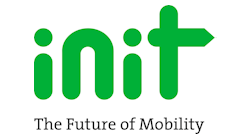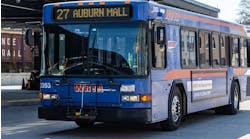Agencies have embraced the shift towards the use of mobile applications in fare collection, real-time data as well as management. Mobile applications and the technology behind it can not only reduce agency costs, but also provide up-to-date information to passengers and the agencies operating behind them.
Mobile applications reflect the industry. As multimodal transit options continue to rise — these apps begin the incorporating these modes as options for their users.
Jake Sion, Transit's chief operating officer explained that when Transit first introduced its app in 2012 the main focus was getting user’s information on their bus or train as quickly as possible.
“You would open the app and it would instantly show you departure time for all the transit options around you. The one thing that we quickly realized was that urban mobility was just starting to shift. People used to have two choices, they would take their car or ride transit, but now there’s a multitude of options,” said Sion. “What we’ve been trying to do is make it as easy as possible to get from A to B in any way that is available. We’ve integrated ride sharing with Uber, you can book and pay for the Uber all through us without leaving the app. You can buy bikeshare passes for ten different cities.”
Developments also integrate apps that can be utilized within an agency in a multitude of ways. Engie launched the Navineo Intelligent Transportation Systems mobile solutions. The three different options are:
- Navineo Mobile Apps for Passengers
- Navineo Mobile Supervision on Smartphone
- Navineo Driver Terminal on Tablet
“The first one, which I would say is the most standout one, is an app for the passengers. You can plan your trip, track the bus, you get all your real-time info. You can track the bus, you can track them on a map and see where they are in real-time,” said Kilian Ollivier, business development manager, North America, for the Intelligent Transportation System line of business at Engie. “Further enhancements that we are looking at next year will be the passenger loading information on the bus, so when you track the bus there will be different colors for the loads for each bus. Green if there are not very many people inside the bus, as well as yellow and red — so people can have a choice in their journey to choose a bus that is not that full.”
Enhancements in Fare Collection
Moving towards the future and increasing the ease at which passengers are able to book and execute their trips, the use of apps is an aspect that agencies are steadily increasing. Nat Parker, moovel CEO said that in a sum total of just over 2 million local public transport tickets were sold monthly through moovel’s technology throughout 2017.
“(Early in 2017) we released a new product that we call Fare Connect, which is essentially a hardware agnostic solution for fare validation. Where you have a system where there is a validator on the bus or a validator in a turnstile, the old way of doing business was that you hire a system integrator who does the software and the hardware in what is admittedly a closed-loop proprietary cycle,” said Parker. “We saw an opportunity to break that apart and give agencies much more choice in terms of their procurement of technology. So with Fare Connect our mobile validation system, ticketing can reside on any piece of third-party hardware and speak to our back office.”
moovel has also formed a partnership with Google, Init and TriMet releasing a virtual transit card within Android Pay.
“Our core business is as a system integrator and to provide the back-end of the system. This is used for apps like moovel. The major benefit for the agencies is that they can select whichever app all they need to do is make sure the app integrates into their API. They add them and they can replace them. Our mission is just to make it easier to use public transit,” said Thomas Schaich, senior systems engineer, Init Innovations in Transportation Inc.
Transit recently began working with Masabi to enhance its offerings.
“We’ve been working with them for a while in a few different cities. Masabi does mobile payments and our part is focused on everything on the customer information side — including real-time and multimodal information. There app links over to our app for customer information. They already had some integration, but what we announced in October (2017) was that Masabi had developed so that riders will be able to purchase their fare passes directly through us without leaving our app,” said Sion. “One of the advantages is that we have millions of people using our app every month across the U.S. and Canada and they’re already using it to get around and now they can also buy a ticket.”
Ensuring Data Remains Secure
With the increased use of technology comes the concern of the security of the transmitted data.
Within Transit’s app, the company does not take personal information from those who use it. Transit sends encrypted information to its servers, which allows the agencies to see who is using the different modes of transportation within their system.
“Within the app it is relatively secure. What we do on the OS side is secure the user data. So if for some information it was hacked, that information is not useable,” explained Guillaume Campagna, Transit's chief technical officer. “We check for security updates and things of that sort. We do not receive any personal information. We don’t have their credit card, phone number or their email. The information that we have is where people are planning trips throughout the city, but it is not linked to a name.”
moovel also utilizes encryption in the protection of their users data.
“Security is paramount to our platform. It is absolutely the first priority in our applications as we’re dealing with people’s private information and payment data. We adhere to the highest rigor vis-à-vis security encryption, data transfer and data storage,” said Parker. “For us that means making sure that every payment is entirely tokenized using PCI standards and encryption. We also have thorough checks vis-à-vis fraud mechanisms, velocity checks in user behavior to detect fraud early.”
With the recent release of the virtual card payment that moovel established with Android Pay the company moved to the utilization of cryptography. Init also has a strong base in the focus of security in the partnership.
Schaich explained, "(Security) is one of our main focuses during the development process. Our complete system is designed, especially with PCI compliance in mind. So when it comes to validators, the major concept that we have designed is that we never store credit data in our system. And therefore make PCI compliance for the agency as smooth as possible. We do that on the other side that it the end-user does not miss any functions. We provide all functions to make using public transit very easy."
Parker explained, “The method is called Elliptic Curve Cryptography. This is one of the most respected and highest levels of security when it comes to virtual payments. We also ensure that all of our systems are fully stock compliant, so we have security standards and audits that we pass every year. We also hire an outside firm that does white hat hacking to prevent any penetration of our systems and to ensure again that we are meeting the highest standards. So again it is job one for us. We live and breathe security.”
Engie takes a different approach. When they provide smart phones or tablets to the agencies for use with the company’s Navineo Mobile Supervision on Smartphone and the Navineo Driver Terminal on Tablet.
“We control every IP address of every smart phone or tablet that we provide to the agency. Only the tablet or smart phone that we authorize is able to access the data and can work with the app. They cannot just buy a new tablet, it won’t work, we have to authorize it,” said Ollivier.
For the passenger app Ollivier explained that Engie's driver and dispatcher apps have user management — passengers are free to download their app. There is also a firewall that is set in place, in the event of a cyber-attack and agency is not faced with a loss of information.
Looking To a Tech Based Future
A common trend within agencies offering mobile applications for a variety of transit services, is looking towards the future. Technology is an ever-changing medium and the use of apps can increase the use of public transit — the easier it is for riders to monitor their modes of transport and fare collection, makes the industry a more attractive option.
"There are a couple really obvious ones when it comes to the nature of mobile technology," said Amy Gardner, Init project manager. "With that the US population is becoming really more comfortable with using mobile payments. You have real-time access to your money. With mobile apps you have a secure payment stored in your app if you’re running for the bus and realize you’ve forgot your wallet. It allows this ability to couple things together into one accessible piece of technology."






